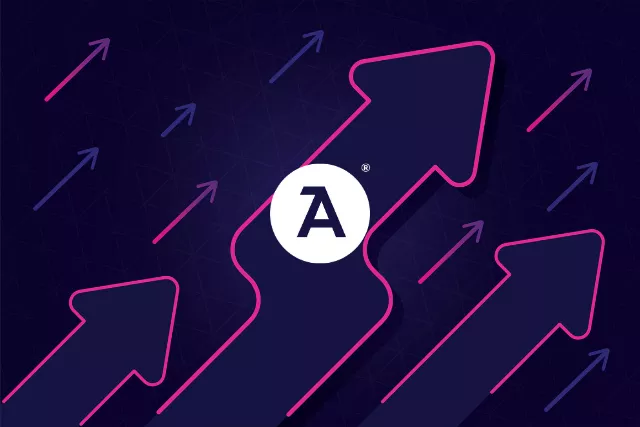Why Traditional Workplace Recovery Fails in Modern Business Continuity

Disasters happen more often than we think. From environmental hazards to digital issues, these disasters are powerful enough to damage your business. That’s why 40-60% of small businesses don’t reopen following a disaster.
The classic advice is to develop a business workplace recovery strategy. But is your strategy optimized for the modern-day? What is disaster recovery in modern business? Here’s why disaster recovery fails in the modern workplace and what you can do to modernize your business continuity plan.
Traditional Workplace Recovery Doesn’t Account for Employees’ Personal Lives
This is the era of work-life balance. To create a more competitive workplace, more employers are offering perks for a flexible workplace. Such a strategy includes remote work, flexible working hours, and generous PTO.
An average business continuity plan doesn’t focus on your employees’ wants and needs. Even with a workplace recovery strategy, your company will have to put in the time to bring your business back to normal. Your staff will work long hours recovering files, working on projects that were already finished, and other tasks essential to continuing your organization. No employee wants their personal lines compromised because of a business disaster. There’s a good chance you can lose valuable staff members during this process.
Disasters are costly to a business of any size. A company can be losing an average of $100,000 each hour its operations are down. And this amount doesn’t include any reputational damage done to the brand that can result in even more negative circumstances. If your staff is expecting a performance bonus, raise, or promotion, there’s no guarantee your business can afford it.
But what if something happens to your physical location? In a regional disaster, your employees’ homes can be affected, creating more worries for your workforce about their families and friends. During a time like this, it makes no sense to force staff on a long journey to work. Employees are the essential component of any business entity, and its in the company’s best interest to find a solution that allows people to remain closer to home if disaster strikes, allowing them to prioritize their family while keeping their work projects on the radar.
To help your organization find the optimal route, testing of recovery facilities can provide a lifeline. If the recovery site is too close to a disaster, it may become inaccessible. One also needs to consider the number of seats needed to accommodate the team in the recovery site. Lastly, the recovery site shouldn’t be too far away from the primary location. Otherwise, people may be unable to travel long distances.
Disaster Plans Don’t Cover Remote Workers
Half of the U.S. workforce is projected to switch to remote work. Remote work is popular for employees and businesses. Employees love the convenience of working from home. Remote work also reduces overhead expenses for businesses.
Besides, working remotely is also seen as a physical business recovery solution. For example, if your office loses power or there’s a network outage, your staff can work remotely to prevent downtime. However, remote work poses many security risks. If your staff works from a vulnerable internet source, such as public WiFi, you’re increasing your risks of an attack.
By comparing conventional business continuity plans with the ones that focus on resilience more, the widening gap between companies’ requirements and recovery options available on the market expands. While this gap may be filled by a work-from-home policy or co-working spaces, it can’t be the complete picture. Your critical personnel still needs to be placed in a convenient office with the necessary equipment. With a comprehensive solution focused on technology and people, businesses can safeguard their operations.
Your modern business disaster plan should ensure your staff has access to a device (ideally a laptop, but a tablet and even a mobile phone can work) along with the nearest internet access point, whether it’s at their home or a co-working space.
The importance of regular remote work safety training is often overlooked. It needs to include only using private WiFi and a VPN connection, not displaying sensitive and financial information in public, and having a strict remote work policy when remote work is used as a backup plan. Very few businesses test their remote work policies for security and efficiency. You can update your disaster recovery plan to ensure your remote work policy has no weaknesses, allowing for productivity and safety in all settings.
Modern Workplace Recovery is Reliant on Technology
It’s apparent we as a workforce are more reliant on technology. It offers more flexibility and many added risks, in both a remote and in-office setting.
Our reliance on technology is also risky when your staff works in the office. 40% of employees use a device that’s not monitored by their employers. There’s no guarantee your employees have malware protection and anti-virus software to protect your files and prevent an attack.
Your employees are also your biggest risk to your digital security. A staff member can easily download a malicious attachment, allowing hackers to gain access to your systems.
Ransomware is one of the most common examples. The best way to counter these attacks is to save your data on a separate hard drive so you can still access your data on a separate device in the event of an attack. However, cybersecurity isn’t your only technological concern. What if a staff member loses their device or their device is stolen? If there’s no backup device or plan, this can result in significant downtime.
Technology isn’t always there when we need it. Many factors can cause power outages, lost internet signal, and loss of information access. If your business loses power in the event of a storm, what’s your next working option? What if there are issues with your business WiFi, how can your staff work while staying secure?
The digital platforms you use, specifically cloud platforms, can also be at risk. Let’s say the platform is suffering downtime or is updating. What’s your plan B in the event you can’t access crucial information and files? Your disaster recovery plan should include all downtime and disaster possibilities, ensuring a plan B is implemented if you can’t gain immediate access to your systems.
Create a Modern Disaster Recovery Plan
There are many modern working trends, such as remote work and added technological platforms. These make your workplace more efficient and productive. However, these modern work elements pose many risks from hazards and even hackers.
To create a successful strategy for operational resilience, an organization needs to have access to a mix of approaches for different types of needs. Most importantly, such a strategy has to address the needs of people and not just IT and business functions.
Forward-looking workplace recovery plans need to focus on the services their clients need most. How your customers perceive your brand is often defined by how an organization deals with a crisis, and businesses that take advantage of disasters to provide an exceptional level of service can emerge stronger.
Even though a work-from-home strategy will still be an option for some employees, it is not sustainable long term. A much-needed answer can be found in turnkey workplace recovery solutions, such as ReadyOffice, that are compatible with the requirements of employees, businesses, and their clients. A flexible recovery service allows companies to recover securely and when it’s needed, and an option to activate solutions at short notice in multiple locations is a priceless tool for business continuity.



